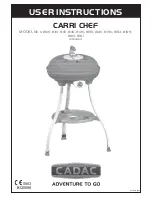
--- 21 ---
Fig. 8
(2) Rotation only (Fig. 7)
Adjust the change lever to "rotation only" ( mark). The lock plate is moved forward by the pin of the change
lever, and the clutch is moved forward at the back end of the lock plate. Engagement between the clutch and
the claws of the reciprocating bearing is released ( A portion in the figure). Thus no rotation is transmitted to
the reciprocating bearing and hammering is stopped. On the other hand, the pinion sleeve engages with the
second pinion ( B portion in the figure), and so the rotation is transmitted to the pinion sleeve for "rotation
only" function.
Pinion sleeve
A portion is separated (hammering stopped).
Lock plate (front end portion)
B portion is meshed
(rotation transmitted).
Fig. 7
Clutch claw
Change lever pin
Claw of reciprocating bearing
Reciprocating
bearing
Lock plate
(rear end portion)
(3) Hammering only (Fig. 8)
Adjust the change lever to "hammering only" ( mark). The second pinion is moved to the motor side by the
pin of the change lever. Engagement between the pinion sleeve and the second pinion is released and no
rotation is transmitted ( B portion in the figure). The lock plate is moved to the motor side by spring (B) and
engaged with the locking claw of the second pinion to lock the cylinder rotation ( C portion in the figure).
On the other hand, the clutch engages with the reciprocating bearing for "hammering only" function ( A portion
in the figure).
C portion meshed (tool locked).
B portion is separated
(rotation stopped).
Lock plate
Second gear
Cylinder
Spring (B)
Pinion sleeve
Change lever pin
Second pinion
Clutch
Locking claw of second pinion
Reciprocating bearing
A portion is meshed
(rotation transmitted).
Second pinion
Summary of Contents for DH 24PC3
Page 38: ... 35 Fig 30 2 Product without noise suppressor ...
Page 47: ......
















































